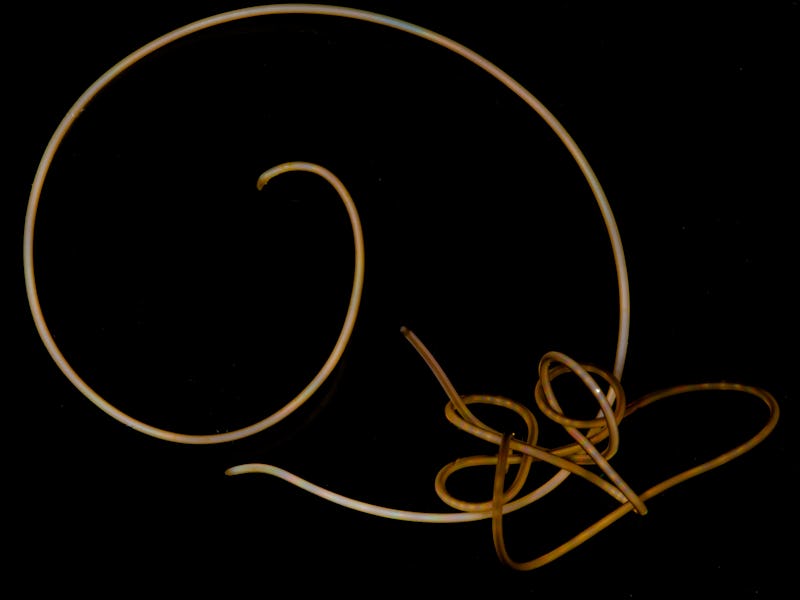This Mind-Controlling Parasitic Worm Is Missing Genes Found In Nearly All Animals
Hairworms are missing a set of genes common to nearly all animal cells.

For all the different kinds of manipulation in our cultural lexicon — from gaslighting to negging — nothing beats good old-fashioned mind control. Like your worst ex, one master of this power is a type of parasitic worm — and it turns out its genetics might be even more bizarre than its manipulation skillset.
The hairworm, which resembles a strand of spaghetti, nestles itself inside the body of its host animal and has the ability to control the creature’s movements. While researchers are still working to pin down how exactly the hairworm pulls off this creepy feat, they discovered something even weirder about the devious creature.
In a study published today in Current Biology, researchers found that the hairworm lacks a third of a set of genes that really should exist in all animal groups. Whether or not there’s any connection between the massive set of missing genes and the creature’s ability to control other animals’ minds is still unknown. But suffice it to say, this animal is weird.
These missing genes code for common hair-like structures called cilia. Indeed, researchers have noticed that hairworm cells are puzzlingly bare where other worms’ cells would have cilia. Their sperm lack tails, which are a form of these hair structures. Tauana Cunha, the study’s lead author and a postdoctoral fellow in evolutionary biology at the Field Museum of Natural History, connected this feature with hairworm genes when she and her team from Harvard University and the Natural History Museum of Denmark sequenced two sets of these parasites’ genomes, one from a freshwater species and one from a saltwater species.
“Based on previous observations, it didn’t seem like hairworms had any cilia, but we didn’t really know for sure,” said Cunha in a press release. “Now, with the genomes, we saw that they actually lack the genes that produce cilia in other animals — they don’t have the machinery to make cilia in the first place.”
Sequencing these genomes definitively proves that hairworm cells can’t make cilia at all. This finding opens up a question of when hairworms evolved to lose the genes that build them. Because both fresh and saltwater species lack this ability, Cunha suspects this change occurred early in their evolution. Since most animal cells possess the genes to make cilia, this feature is conserved throughout evolution. If hairworms don’t have it at all, they must have split off from other animals early on. She also wonders if their parasitic lifestyle somehow relates to this lost set of genes.
Cunha notes in the press release that in order to further suss out whether the lack of these genes influences their behavior, researchers can compare sequenced genomes of all known mind-controlling parasites. “We might be able to look for similarities,” she says. “Or maybe these organisms evolved similar behaviors in completely different ways from each other.”